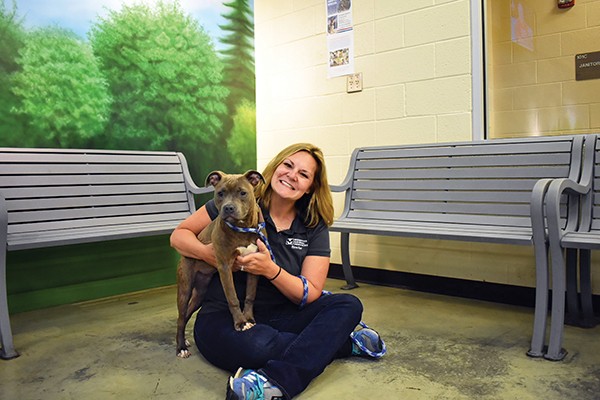Memphis Animal Services (MAS) increased its save rate by 70 percent from 2010 to 2019, going from 19 percent to 89 percent.
Alexis Pugh, executive director of MAS, said the goal and national threshold is a 90 percent save rate. Though the shelter has nearly reached this number, Pugh said the ultimate goal is to have zero animals euthanized because of space. A key to that is to keep animals out of the shelter and in loving homes, Pugh said.
 Memphis Animal Services
Memphis Animal Services
Alexis Pugh, executive director of Memphis Animal Servies.
Memphis Flyer: To what does MAS attribute its increased save rate?
Alexis Pugh: When you have something as complex as animal welfare, there are a lot of moving parts that work together to achieve something. I certainly think social media has played a huge role. Most people nowadays find and adopt pets using social media and the internet. It’s just brought a lot of awareness to what’s happening at the shelter, and that’s critical for people to rescue animals from here.
MF: What else has helped increase the save rate?
AP: When Mayor [Jim] Strickland became mayor in 2016, he decided to really dig into what the challenges are here and provide the needed support and resources. He not only put his money where his mouth is, but also put the people, support, and leadership where his mouth was.
The mayor has also been extremely supportive about making progressive shelter changes. There are some programs that we’ve put in place that not every mayor would be willing to do. For example, the owner-surrender-prevention program, which manages our intake, because we’ve got to keep pets out of the shelter and keep them with owners.
It’s programs like these that have allowed us to achieve what we’re achieving, even with the intake rate going up. We took in more than 11,000 animals in 2019. The last time we took in that many animals was 2014. Our save rate was 40 percent then. This is a really impactful statistic.
MF: What are some remaining challenges at MAS?
AP: The last at-risk category we have is large-breed dogs. A lot of that comes down to [what kind of animal] the public is interested in adopting. I don’t think that it comes as a surprise that when we have small-breed dogs, there are lines of people waiting to get those pets. Unfortunately, the interest is less for large dogs, especially for dogs who have some pitbull-like appearance.
Pitbulls are the most-bred dog in the United States and here in the community, but they have a bad stereotype and reputation, which is reinforced by certain insurance companies or leasing offices. So this cuts out a segment of potential adopters because they can’t have these types of dogs where they live. Pitbulls are the No. 1 type of dog in here, and these poor guys are being set up for failure.
MF: What are the goals for the next decade?
AP: In 2020, we’re really focusing our efforts on community outreach and providing better resources for those high-intake ZIP codes, like quality housing for pets or behavior counseling. Or, if you have a hole in your fence and your dog gets out, how can we help with that? Our focus this next decade is to say that not every animal needs to walk through our front door at the shelter. We need to be where animals go when there is no alternative.